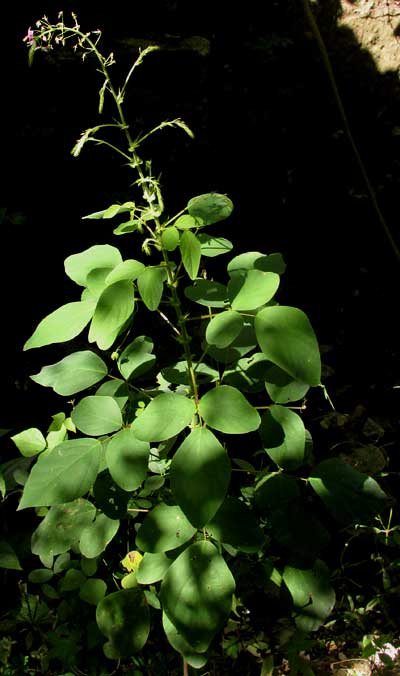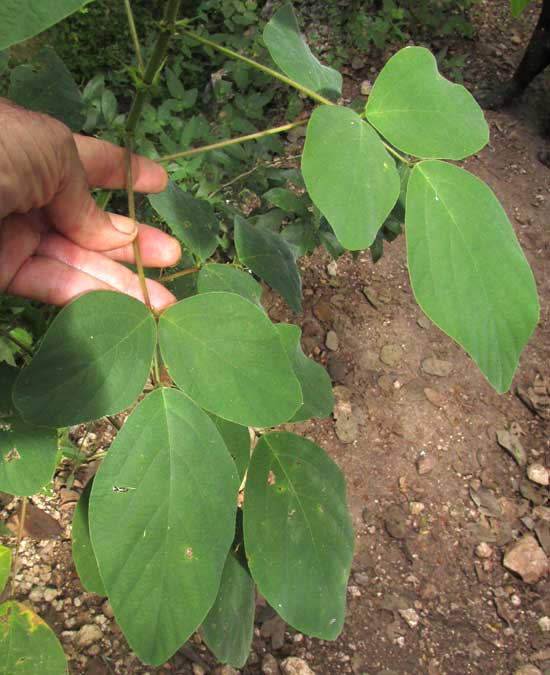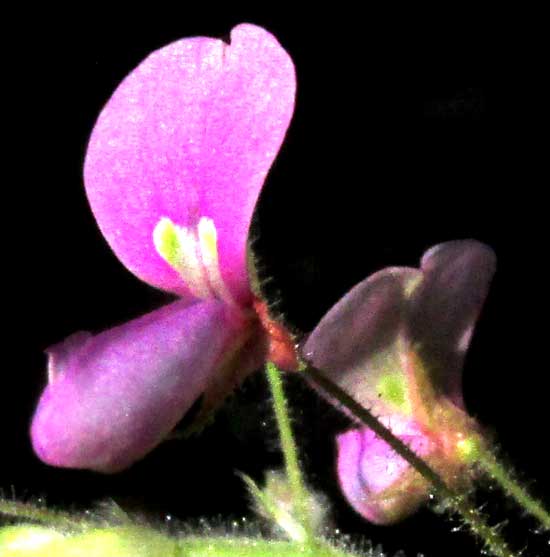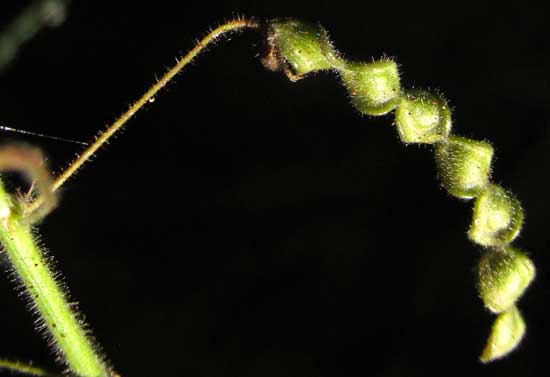Excerpts from Jim Conrad's
Naturalist Newsletter
from the November 12, 2017 Newsletter issued from Rancho Regenesis in the woods ±4kms west of Ek Balam Ruins; elevation ~40m (~130 ft), N20.876°, W88.170°; north-central Yucatán, MÉXICO
TICK TREFOIL
Every organism, even the most noxious weed, sometime during its life history has its moment of beauty, and that's the case with a certain herbaceous plant that volunteered to grow at the very rim of the deep pit beside the hut. In a morning shaft of sunlight its stately form is reminiscent of a little pagoda, as you can see below:

With compound leaves consisting of three broad leaflets -- trifoliate leaves -- looking like leaves of garden bean vines, we can assume that this is a member of the Bean Family, the Fabaceae. A better look at the leaves is shown below:

This is a vigorous herb, one with its stems and petioles thickly mantled with long, stiff hairs. Also, at the base of each leaf's petiole unusually large, well formed stipules flare from around the stems, reminiscent of garden peas. This is shown below:

If you're still unconvinced that we have a member of the Bean Family, below, look at the blossoms' classic "papilionaceous" shape -- bilaterally symmetrical, with an enlarged top petal forming a "banner," two side petals called "wings," and two lower petals fused to form a scoop-like "keel":

A side view of a flower's corolla perkily nodding atop its long, hairy pedicel is shown below:

So, it's some kind of Bean Family member, a kind of "leguminous" plant, so it ought to produce legumes. On older plants such as the twelve-ft-tall one (3.7m) in the garden, legumes are being formed, such as the one shown here:

That's a special kind of legume called a loment. Loments are leguminous pods that when mature break into one-seeded joints. You can see that the loment is covered with stiff hairs. Up close it's seen that at least some of the hairs are hooked at their tips, shown below:

So, the loment breaks into pods covered with hooked hairs that catch onto passing animals or trouser legs, carrying the pods into new territory.
These are all features of a particular Bean Family genus, the genus Desmodium. Species of Desmodium generally are called tick trefoils because of their trifoliate (trefoil) leaves, and the loment pods that stick to our clothing like ticks. In North America numerous Desmodium species present themselves as wildflowers and weeds.
The species in our pictures is DESMODIUM DISTORTUM, native of southern Mexico south through Central America to northern South America, plus it's invasive in much of the Old World tropics. The Yucatan Peninsula seems to be a little too arid for it, so it occurs here only spottily, and where it does occur it behaves like an invasive weed. In the area around the rancho it's fairly common, but I never saw it near Chichén Itzá.
Despite the stiff hairs that give the plant a rough feeling, the FAO suggests it as acceptable livestock forage and "green manure."